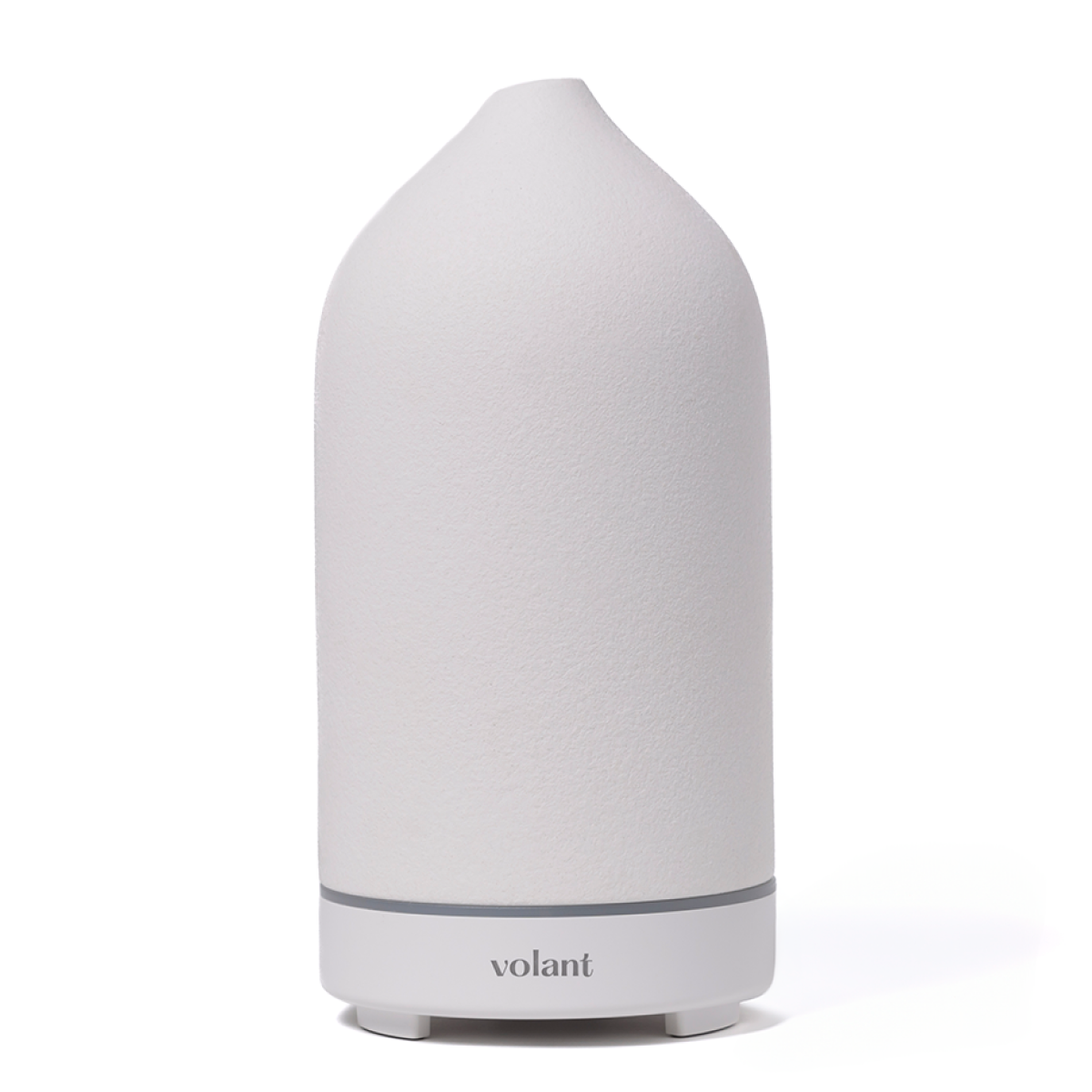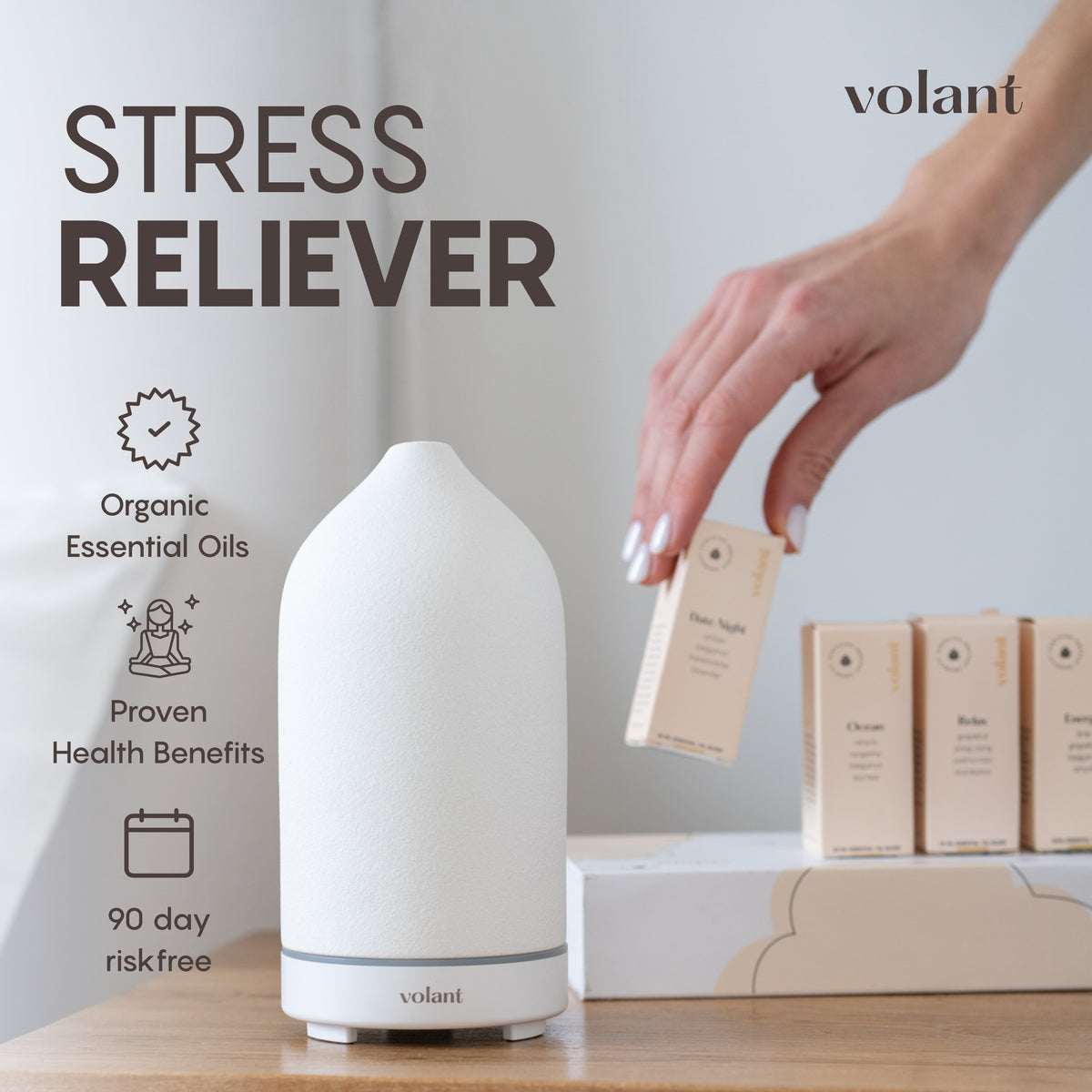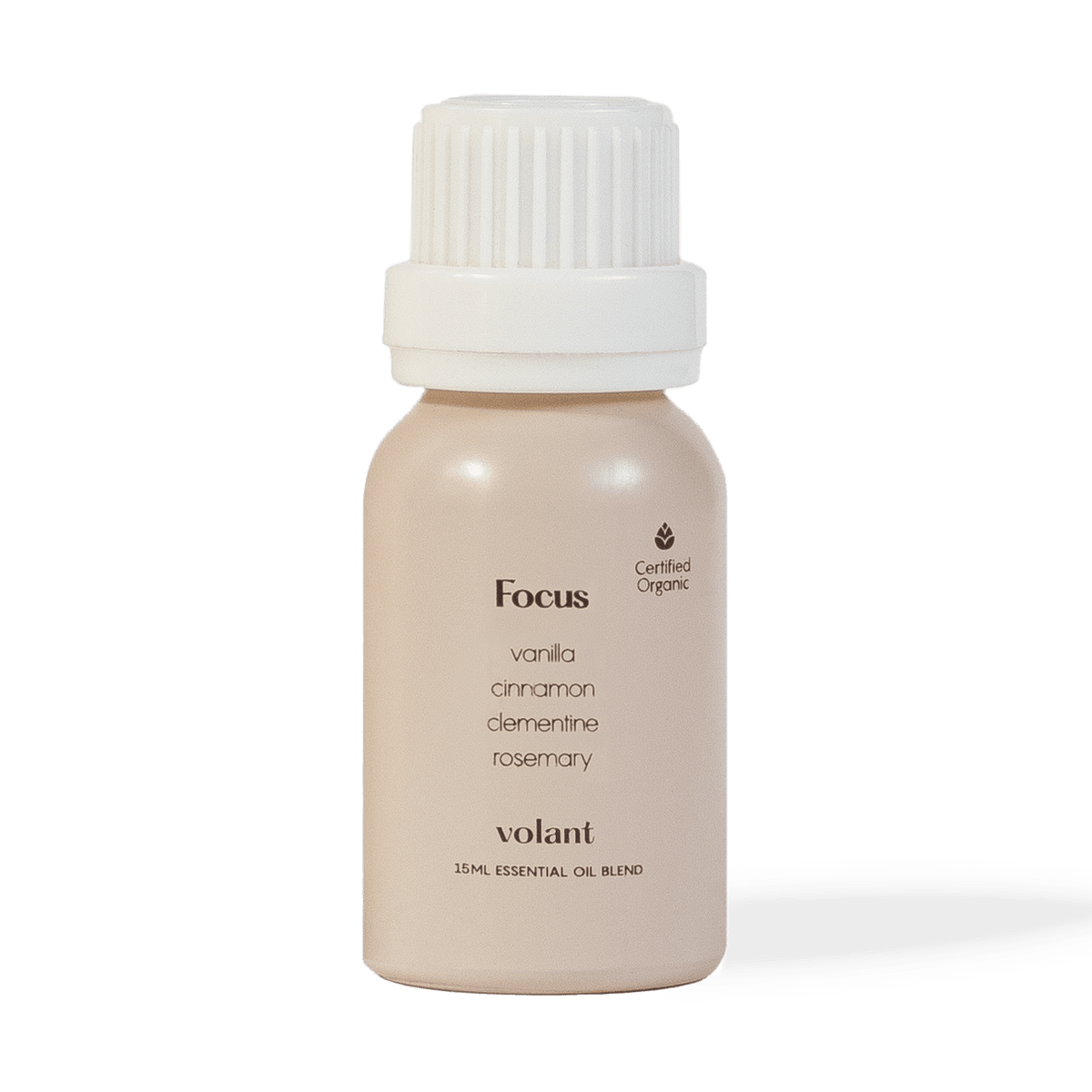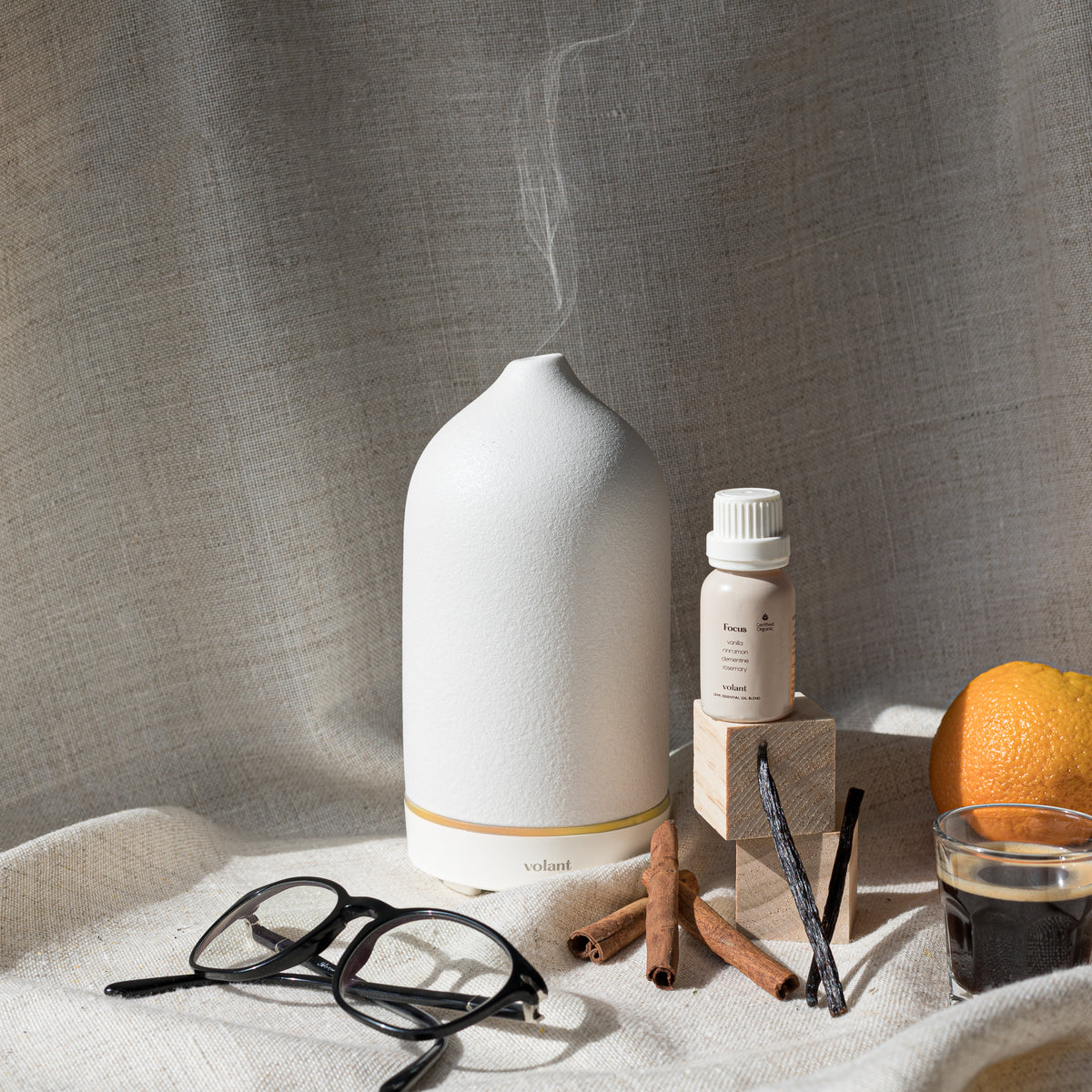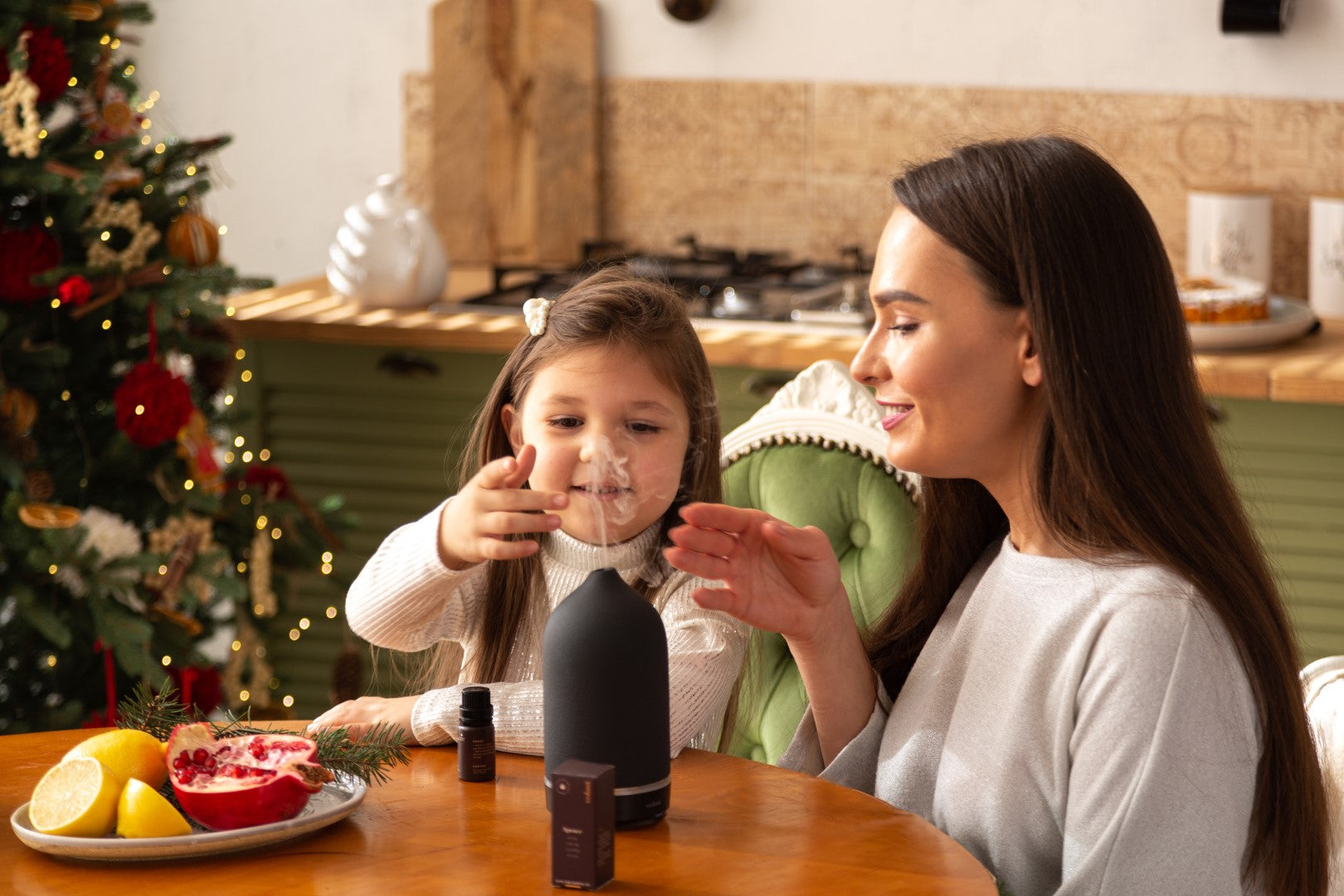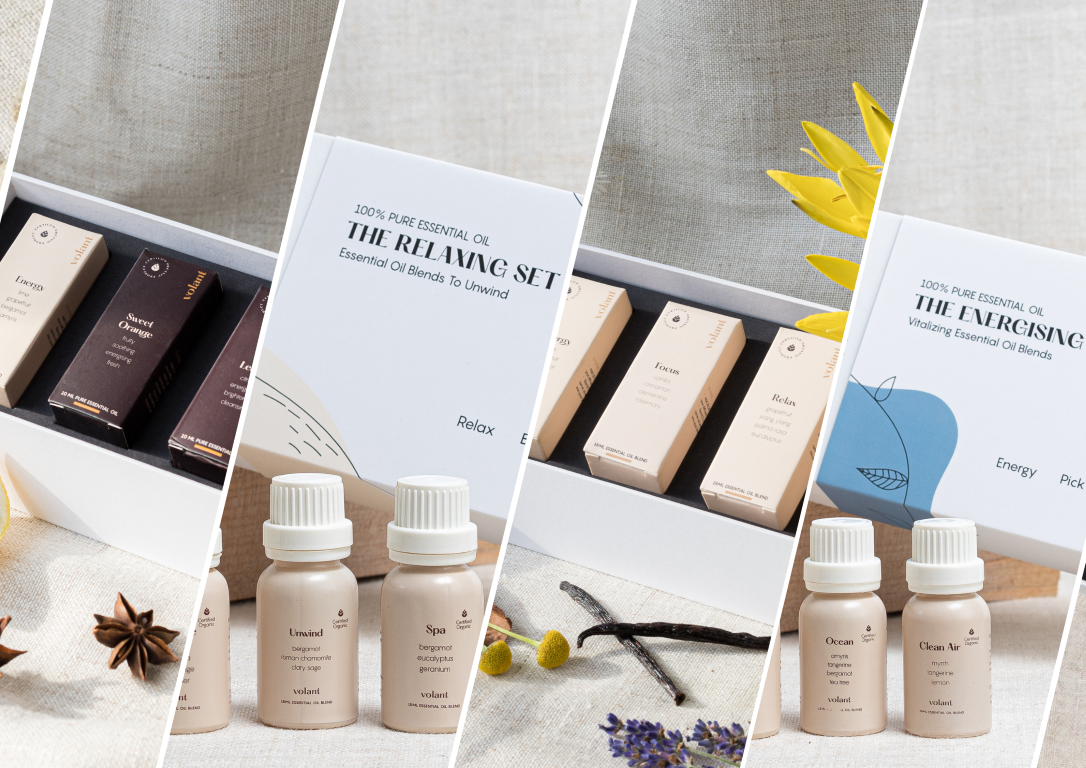From as far back as the 17th century, people have been using vanilla oil as a natural home remedy due to its nutritional value. Today, vanilla oil is most popularly used in aromatherapy and the making of perfume. But what you may not know is that vanilla oil has antioxidant qualities that provide physiological benefits.
If you’d like to find out more about this oil and how to use it safely and effectively, this guide tells you everything you need to know. From its origins and how it’s made to any side effects or contraindications, we’ve covered it all.
What is vanilla essential oil?

Vanilla essential oil is a natural extract of the vanilla bean and its scientific term is vanilla oleoresin. It is made from the dried, fermented pods of the orchid Vanilla planifolia. The seeds are removed and then processed to obtain this fragrant oil that has a rich, creamy aroma and subtle taste.
Traditionally, vanilla beans are grown in Mexico, Madagascar, Indonesia and parts of Central America. The vanilla bean pods must be picked by hand because they release their flavor only after being dried for several months at low temperatures and then slowly fermented over a period of time until they develop their distinctive aroma.
Vanilla beans have been used for centuries as flavoring in food products such as ice cream, cakes and pastries. In recent years, vanilla has become more popular among perfumers due to its unique fragrance properties which can be used in many types of perfumes, both natural scents and synthetic ones.
The most common reason for the high cost of vanilla beans is their limited supply. There are only two countries in which this tropical fruit grows naturally. Vanilla plants take seven to eight years to reach full maturity, after which they must be hand-pollinated before they can produce pods containing seeds that will grow into new plants.
Vanilla essential oil - quick facts
🤎 Latin name: Vanilla oleoresin from Vanilla planifolia
🤎 Countries of origin: 🇲🇽 Mexico, 🇧🇿 Belize, 🇲🇬 Madagascar, 🇮🇩 Indonesia, 🇭🇹 Tahiti
🤎 Scent note: Base
🤎 Annual Production: 7,614 tonnes
🤎 Popular uses: Body care, aromatherapy
How is vanilla essential oil made?

There are five methods of extracting vanillin for the purpose of creating vanilla essential oil. Each process will create a different kind of oil.
Vanilla extract
It is not that easy to create vanilla extract, especially compared to other kinds of essential oils. It is impossible to extract the aromatic aspects of the vanilla bean via a mechanical or distillation process. Instead, vanilla is extracted from the beans using a mixture of alcohol (typically ethyl) and water.
But before this can be done, the pods containing the vanilla beans have to undergo a curing process that takes about 3 – 4 months to complete. This allows for the propagation of greater amounts of vanillin, the organic compound responsible for vanilla’s iconic aroma.
After curing is complete, the process of extraction will go on for months before the mixture has aged enough to have drawn out that distinct vanilla aroma. In order to achieve the most optimal degree of vanillin extraction, vanilla pods will have to sit in this ethyl/water mixture for a number of months.
But to achieve such turnaround times, you need the ability to moderate environmental conditions in a way that only large-scale manufacturers are capable of doing. Homemade vanilla extract, on the other hand, can take as long as a full year to produce. It is thus much easier to purchase it than to make it yourself at home.
Vanilla oleoresin
While vanilla oleoresin isn’t really an essential oil, it is often used as one. Vanilla oleoresin is made by removing the solvent from vanilla extract. It’s thicker than a typical essential oil and is a more economical option that is often added to personal care products.
Vanilla oil infusion
This process involves soaking the dried, fermented vanilla bean with a neutral oil such as grapeseed oil or almond oil which are perfect for extracting the aromatic attributes of vanilla. The process of fermentation and drying creates natural enzymes that are responsible for the rich flavour and aroma of vanillin.
There are two fantastic aspects of vanilla oil infusion that distinguish it from vanilla extract. First, this kind of vanilla oil is ideal for use on the skin and can be added to beauty products. Vanilla extract, on the other hand, should only be used for deodorizing, beauty products and cooking. Second, vanilla oil infusion can be made relatively easily at home and takes much less time to produce.
To make your own homemade vanilla oil infusion, you can start by acquiring some vanilla beans and slicing them into tiny sections. You then place these bits into a jar and fill it with your preferred neutral oil. Afterwards, you can pop the lid on that jar and let the mixture infuse for roughly three weeks (the longer the better). After it has been infused, you can pour the solution through a sieve and into a fresh jar.
The resulting oil infusion can then be used for a number of applications. Added to beauty products, the oil will give your homemade toiletries a stunning vanilla scent. Once again, if you are looking for vanilla essential oil for skin care, this is the one you should use. You can also use the infusion method to create vanilla bath oil, and this is the perfect way to make your bathtimes more luxurious.
Vanilla absolute
While neither this or either of the above kinds of vanilla derivatives fit the bill as an actual essential oil on their own, vanilla absolute is the closest thing to it. Typical essential oils will be produced through steam distillation, whereas vanilla absolute requires the application of a solvent instead.
The solvent extraction method is a two-step process initially requiring the application of a non-polar solvent to extract vanilla oleoresin from vanilla extract. One of the most common solvents used during this step is benzene. A polar solvent will then be used to extract vanilla absolute from vanilla oleoresin. This will typically involve the use of ethanol.
Vanilla absolute is incredibly powerful and definitely not edible. You will also not see this vanilla oil in skin products. Instead, you will see vanilla absolute being used in perfumes. Its primary function in perfumery is that of playing the role of a base note. Its soft aroma is incredibly effective at smoothing out the sharper scents in floral mixtures.
Carbon dioxide vanilla extract
Unlike the aforementioned vanilla products, this is an actual essential oil. It’s extracted via the application of high-pressured CO₂ as the solvent. What makes carbon dioxide an effective solvent is the fact that it can be completely removed from the mixture once extraction is completed by returning it to its gaseous form.
CO₂ vanilla extract is made by compressing vanilla pods with carbon dioxide in a stainless steel container. The carbon dioxide entering the container will then become pressurized and turn into a liquid. In this state, the carbon dioxide is able to extract the oil residing within the vanilla pods. The container can then be depressurized and returned to its gaseous form. What you are then left with is an incredibly potent vanilla essential oil.
Benefits of vanilla essential oil

Vanilla essential oil has a wide array of uses and benefits, hence its incredible popularity around the world. Here are some of the main benefits associated with vanilla essential oil:
- 🤎 Skin care
- 🤎 Aphrodisiac properties
- 🤎 Mood enhancement
Let’s take a closer look at each of these benefits in more detail.
Vanilla essential oil for skin

Vanilla is a common ingredient in skin care products for good reason. Its warm scent and effects on happiness and relaxation makes it a favorite scent for many. It has also been shown to improve aged skin, providing anti-aging effects and enhancing firmness. There is research which also suggests that vanilla can also help your skin fight off infections.
Vanilla’s photoprotective and anti-aging effects may also help your hair! Dry hair can be rescued using a combination of coconut oil and vanilla oil.
Aphrodisiac properties

It is not uncommon for homoeopathic doctors to prescribe their patients vanilla essential oil when they are suffering from impotence or a weak libido. Plants of the orchid family have been used for several millennia for their aphrodisiac effects, and research is beginning to confirm this. Vanilla’s happiness-boosting and relaxation-inducing effects can’t help but put you in the mood!
Mood enhancement

While vanilla essential oil is not a substitute for qualified psychotherapy for the treatment of mental health disorders like depression and anxiety, several studies have noted a probable link between the use of vanilla in aromatherapy and stress relief.
Aromatherapy comfort vanilla patchouli treatments have been known to induce relaxation by alleviating feelings of both anxiety and depression. Research suggests that the inhalation of strong vanilla scents triggers a nervous system response that calms the mind and evokes feelings of happiness and relaxation.
Vanilla has also been found to improve cognitive function in situations where more focus is required, making it a great scent to have around at work or while studying.
How to use vanilla essential oil
How you use vanilla essential oil depends on what your purpose for it is. You can start benefiting from it in the following ways:
- 🤎 Inhalation
- 🤎 Pillow mist
- 🤎 Aromatherapy massage
- 🤎 Topical application
- 🤎 Bath time
Let’s explore these methods of using this essential oil a little more deeply.
Inhalation

Whether you want to use the scent of vanilla for stress relief, to inspire romance, to boost your mood or just to enjoy its warm, pleasant fragrance, diffusing vanilla essential oil is the safest and easiest way to use it. Simply add 10 drops or so to your diffuser and turn it on!
Pillow mist

If you don’t own a diffuser, or if you want to infuse some vanilla into yours and your partner’s bed on the sly, you can fill a spray bottle with distilled water, add some vanilla essential oil, shake it and mist your pillows with the delicious scent of vanilla to inspire romance or relaxation and sweet dreams.
Aromatherapy massage

Vanilla essential oil can be used to add a softer fragrance to other oils, pairing exceptionally well with mint and citrus products. This essential oil is great for aromatherapy comfort vanilla patchouli massages. Aromatherapy massage is also a great start to romance in the bedroom. Simply add a few drops to a carrier oil and massage away!
Topical application

If you’re looking for a natural alternative to perfume, look no further than vanilla essential oil! Simply dilute 1 or 2 drops of vanilla essential oil with carrier oil like jojoba oil and rub it onto your wrists, inner elbows, neck or anywhere else you would normally apply perfume.
Adding vanilla essential oil to a carrier oil or to your body lotions is a great way to supplement your current skincare routine with its anti-aging benefits. Your hair will also thank you for adding vanilla essential oil to your conditioner as a DIY scalp and hair treatment that leaves your hair smelling luxurious.
Bath time

Vanilla’s antioxidant properties are also found in products like vanilla bath oil which can be used on a regular basis. Make your own vanilla bath oil with a few drops of vanilla essential oil and a tablespoon (15 ml) of carrier oil and benefit from both the topical and aromatherapeutic effects of vanilla to treat yourself at the end of a long day, or to treat you and your partner to a special intimate bath time.
Vanilla essential oil research

Given vanilla’s centuries-old usage and popularity across the world, there has no doubt been a lot of research conducted on the plant in its many commercially available forms. For those who make abundant use of vanilla essential oils, this gives great insight and legitimacy to the efficacy and purported nature of this product. Thankfully, science supports the argument that vanilla oil has all these physiological benefits.
Vanilla essential oil for skin care - 2014, 2020
Contemporary research indicates that vanilla essential oil has antimicrobial properties that inhibit the spreading of bacteria on the outer dermis of the skin. This suggests then that vanilla oil can indeed improve skin quality. The study in question indicates that vanilla oil in patchouli is not only good for calming the nerves but for skin care as well.
In 2020, a study was released looking at the anti-aging effects of vanilla extract and another ingredient on human skin. Vanilla was found to protect against the effects of UVA exposure by preventing IL-8 increases and glycosaminoglycan loss. In women, the serum was also able to reduce ptosis or drooping eyelids by up to 23%, enhance skin firmness by up to 30% and increase skin radiance by up to 29%.
Vanilla’s aphrodisiac properties - 2012
Vanilla’s purported aphrodisiac properties were confirmed in a trial on rats. Male rats who were exposed to vanillin exhibited much more frequent sexual activity compared to the controls, and the more vanillin they received, the more sexually active they were.
Vanilla and physiological well-being - 2020
According to research conducted at the University of Illinois, vanilla has medicinal applications for the treatment of various health conditions. These include body spasms, gastrointestinal problems and fevers.
Vanilla and stress, anxiety and depression - 1994, 2021
Scientific experimentation leads us to believe that the scent of vanilla can be an effective treatment for the alleviation of anxiety and depression. Subjects in this study were administered vanilla aromatherapy while undergoing a stressful medical procedure to determine whether or not it assists in the alleviation of stress. The study found that subjects were 63% less anxious when vanilla oil was applied during the procedure.
A recent study in rats also found that stress hormones such as adrenaline, noradrenaline and dopamine were reduced after inhaling the scent of vanilla.
Vanilla and brain function - 2019
In males aged 18-22, vanilla aromatherapy was tested for its effects on cognitive function. It was found that the aroma of vanilla improved various visual reaction time tests and cognitive function. The authors suggested that vanilla is a useful scent in libraries, workplaces and work rooms where people need to focus
Side effects of vanilla essential oil
Essential oils are very potent and need to be diluted with a carrier oil before being applied to the skin to reduce the risk of irritation or a skin reaction. Vanilla is no different.
People who are allergic to vanilla may experience dermal irritation when it is applied in any form to their skin. If you suffer from skin sensitivity, maybe skip the vanilla oil bath or topical use and simply diffuse it instead.
Contraindications of vanilla essential oil
There is a lack of research on the effects of vanilla oil on pregnancy. Thus, if you are pregnant or breastfeeding, you are encouraged to avoid applying this oil topically until after you’ve given birth.
Do not consume vanilla in its purer absolute and carbon dioxide extract forms. These kinds of vanilla products are intended for use in perfumery, aromatherapy, and beauty products. At volant, we caution against using essential oils internally.
Where to buy vanilla essential oil
Being one of the most popular fragrances and essential oils in the world, vanilla essential oil is widely available online and in brick and mortar stores. You can find it at:
Volant

The essential oils sold at Volant are made using only the finest quality plants, ethically sourced and including only natural ingredients. You can thus rest assured that the products you buy from us are 100% pure, organic and faithful to our mission of sustainability. Our Focus Essential Oil Blend contains vanilla oleoresin and is perfect for anyone looking for an energizing and stimulating oil.




